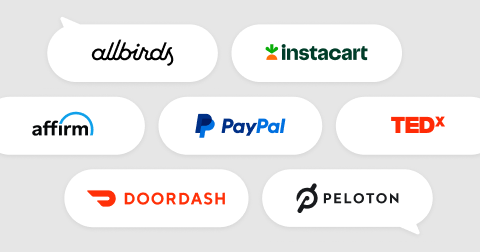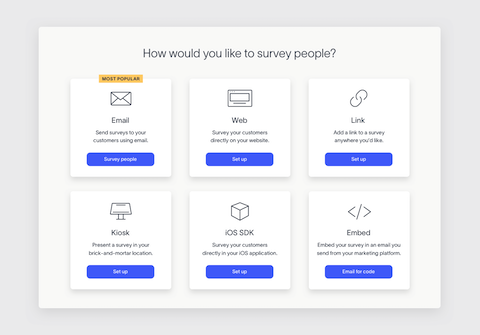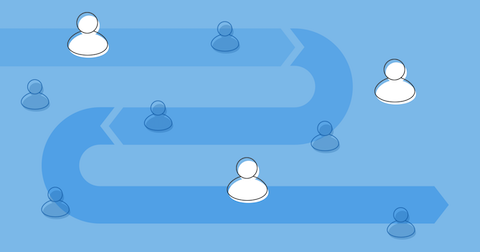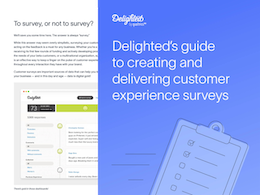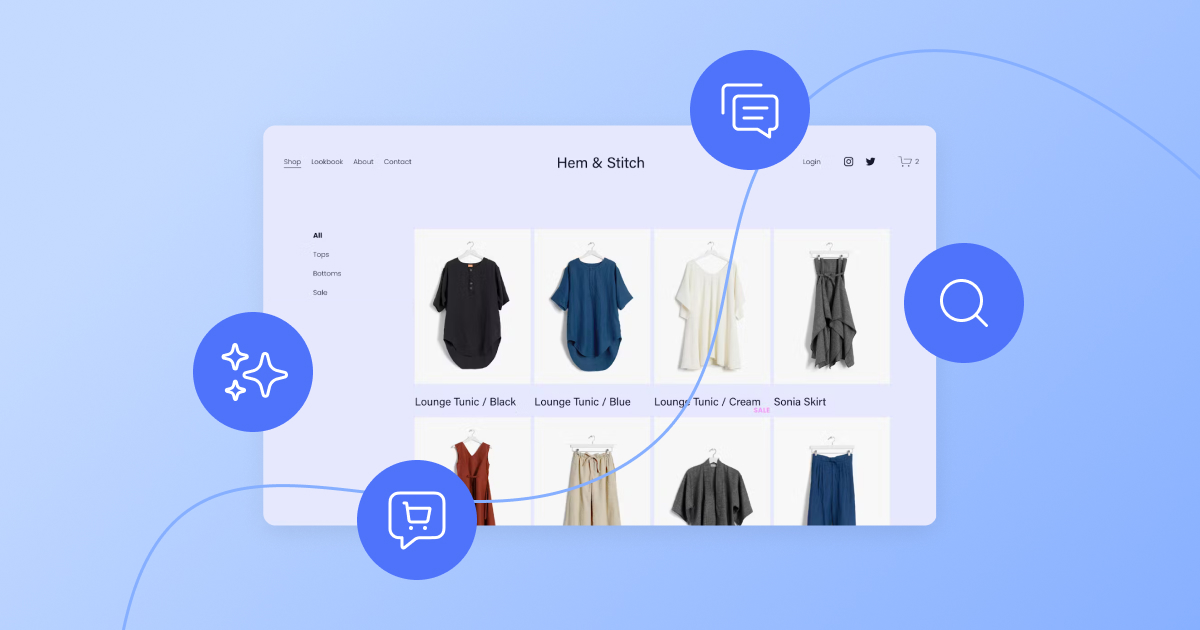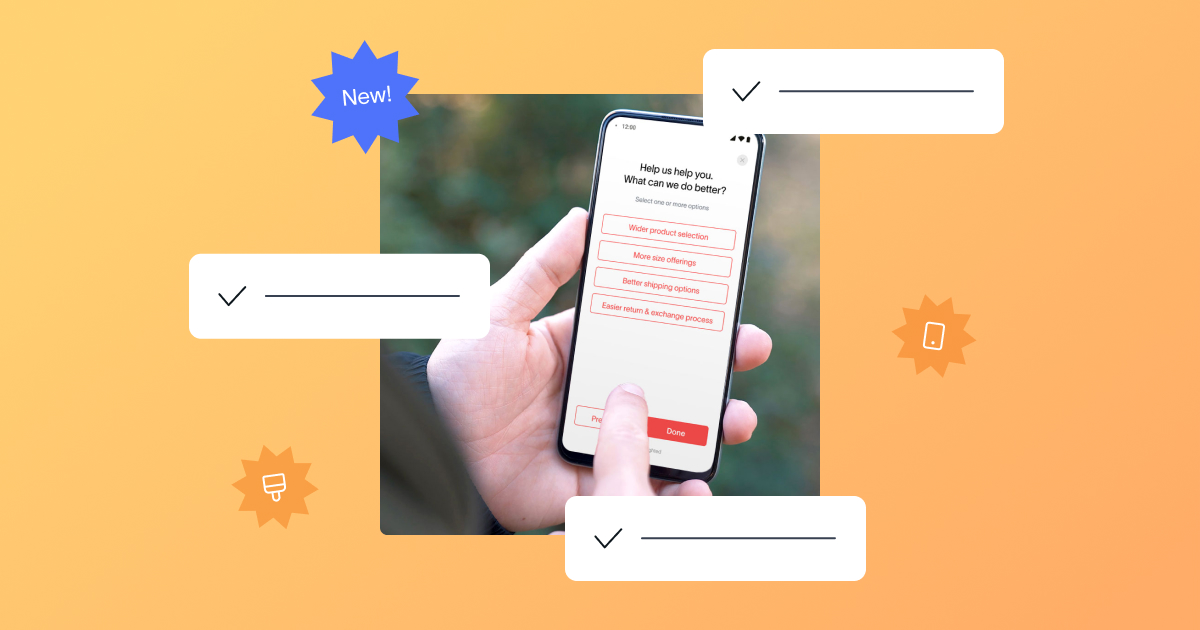Have you ever experienced amazing customer service that went above and beyond your expectations? You probably felt appreciated and impressed at the same time. Imagine being able to deliver that kind of experience to your customers on a regular basis.
Outstanding customer service interactions are capable of producing fierce brand loyalty in a short period of time. That’s why it’s important to understand how to measure customer service interactions with the metrics that capture experiences and turn them into actionable data.
In this article, we’ll share a set of essential metrics you should focus on. These key metrics will allow you to track, measure, and analyze what you can do to better understand your customers, provide more effective support and faster problem resolution time, as well as improve the key customer support scores in your company.
What are customer service metrics?
Customer service metrics are key performance indicators that are used to track, measure, and analyze the efficiency and effectiveness of your customer service teams. Commonly used metrics when measuring customer service include customer satisfaction scores, customer churn rates, and average response times.
Measuring support experiences helps you gauge how loyal and happy your customers are, how likely they are to purchase your product or service again, and whether they’ll advocate for your brand.
Why are customer service metrics important?
The shift towards the customer experience is an indisputable growing trend that has changed the way companies prioritize their organizational efforts. The same shift towards the customer comes with a newfound need for impeccable customer service.
The below data, collected annually by companies and researchers to draw year-over-year comparisons, demonstrates the need for a dedicated customer service strategy:
- 96% of customers say superior customer service is important when choosing and being loyal to a brand.
- 94% of customers who consider their experience with a business as “very good” are likely to purchase that company’s additional products or services in the future.
- 78% of customers are likely to forgive a business for a mistake if they were provided exceptional customer service.
- 53% of support teams have seen an increase in customer support requests since COVID-19 hit.
The need for outstanding customer service is clear, but how do you make sure that your support program is meeting customer expectations?
It starts by choosing the metrics for customer service you want to measure, collecting experience feedback over time, and then measuring and acting on the collected customer support data.
Most common customer service metrics
Let’s break down the top customer service metrics you can implement today to improve the customer experience, reduce customer churn, and create long-term brand loyalists:
1. Customer Satisfaction Score (CSAT)
Customer Satisfaction Score, commonly shortened to CSAT, is a customer experience metric that measures happiness with a product, service, or customer support interaction. Customer satisfaction surveys provide a quantitative metric of how satisfied customers are, and more importantly, qualitative feedback that explains why.
A CSAT survey begins with a single question, “How satisfied were you with [Your Company]?” and asks the customer to select a rating from 1-5. Then, the customer can explain their rating reasoning with an open-ended follow-up question.
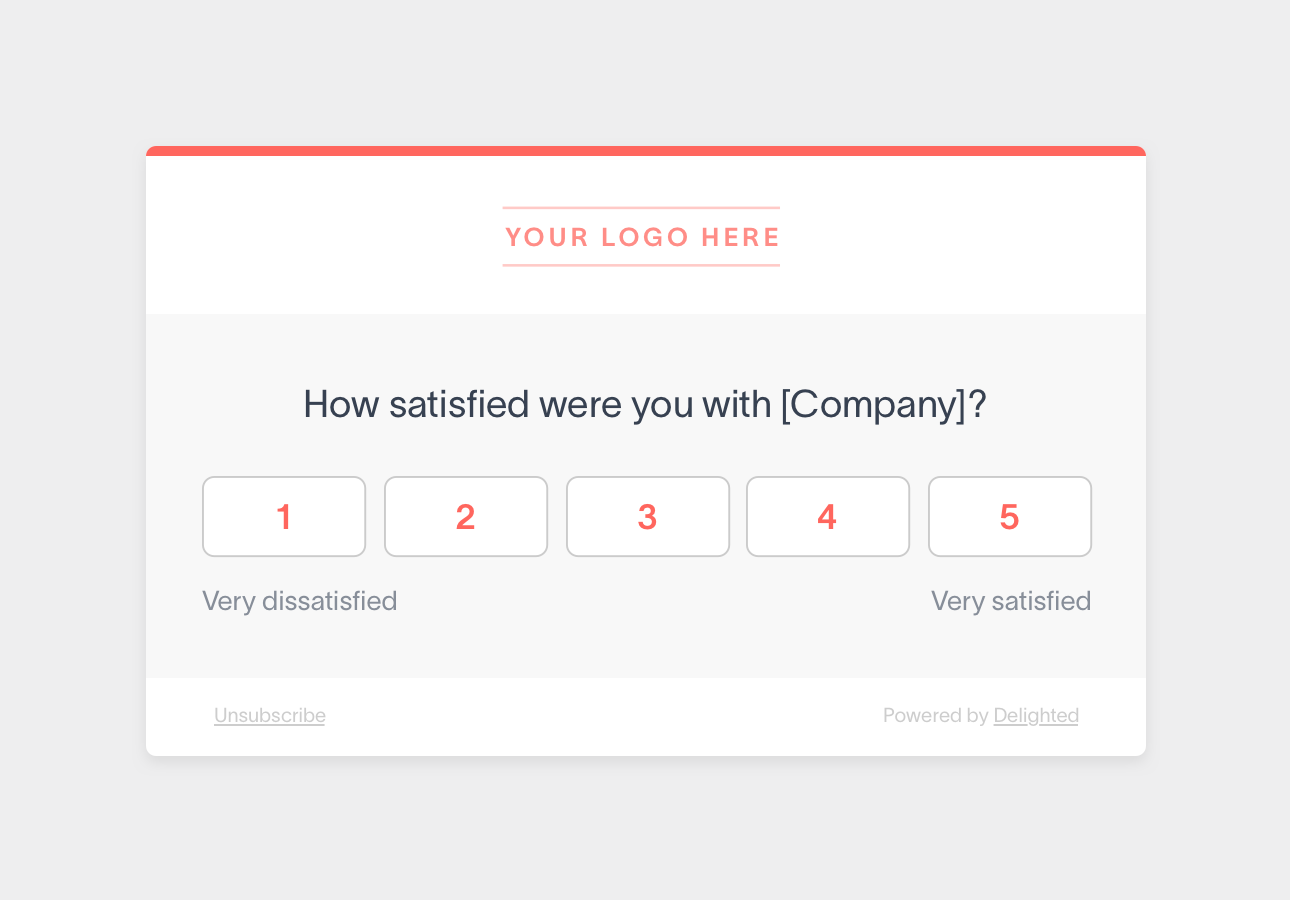
To instantly determine if a customer was satisfied with their support, you can trigger CSAT surveys after any, or every, support interaction (including post-purchase at a store location, after a support call, following a ticket closing, after accessing your knowledge base, etc.) and on any customer channel (email, web, and link).
Two-part customer service surveys are quick and easy to complete – which leads to higher customer response rates and more opportunities to adjust support processes in real time.
Delighted’s customer satisfaction software is the perfect solution for tracking and measuring customer service and general customer satisfaction.
TIP: To gain deeper insight into what went well and what support areas need to be improved, you can also add up to 10 Additional Questions with a variety of question designs.
2. Customer Effort Score (CES)
How easy is it for your customers to get answers to their questions and reach a support member? Is contacting your service center via live chat or social media an effortless experience? If your answer is “I think it’s an effortless process,” then you may want to find out your Customer Effort Score (CES) to see if your hunch is correct.
Customer Effort Score surveys help you identify how much effort it takes for customers to get the support they need and expect.
A CES survey asks customers to select how they feel about the statement, “[Your Company] made it easy for me to handle my issue,” on a 5 or 7-point rating scale.
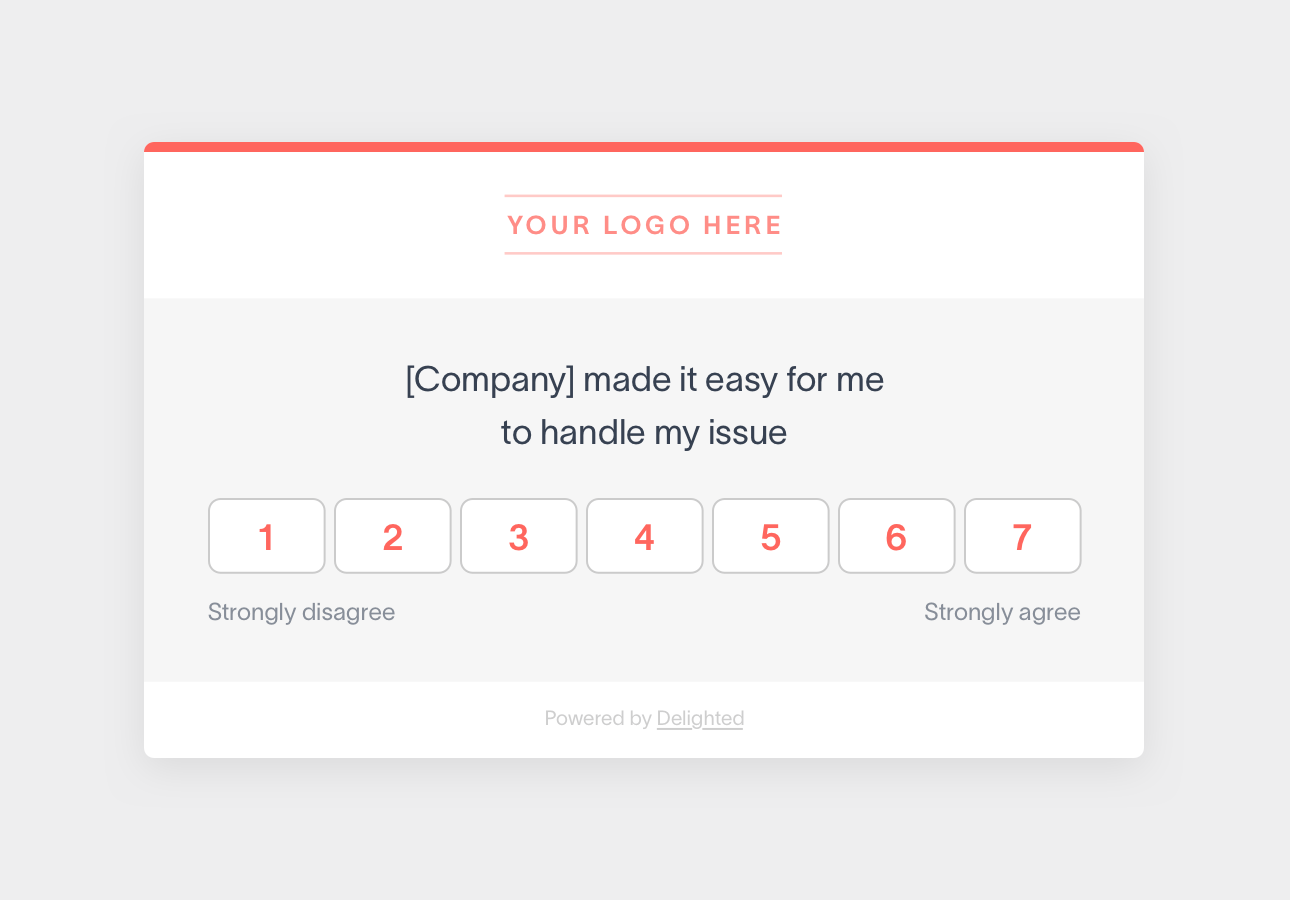
Then, the customer can elaborate on their answer in an open-ended follow-up question.
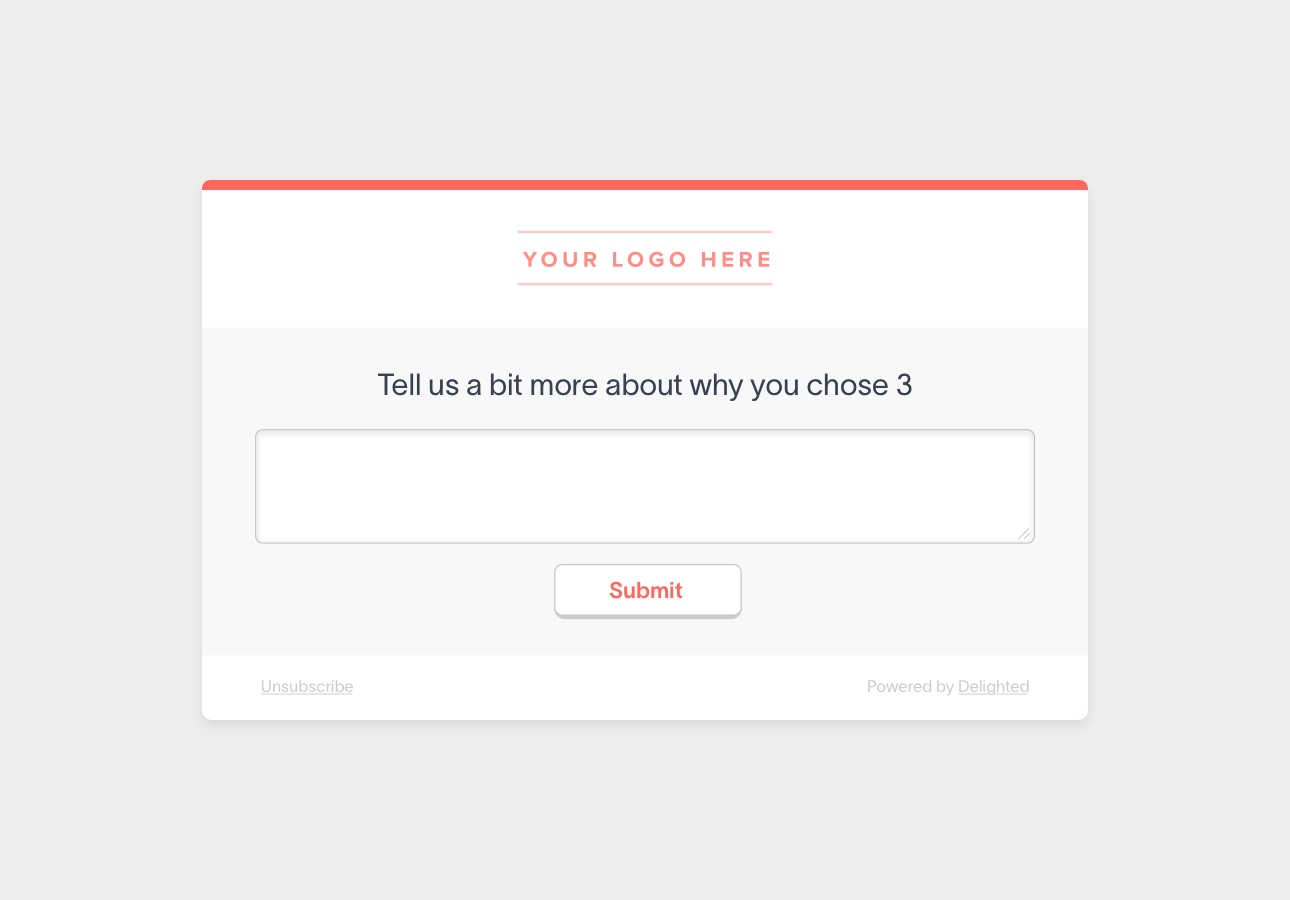
Measuring the ease of a customer’s experience with a customer service agent can help you track quality assurance, team performance, and give you the details you need to make improvements to customer-facing processes.
TIP: Including a Thank you message in your survey can encourage brand loyalists to spread the word about their great experience with your support team!
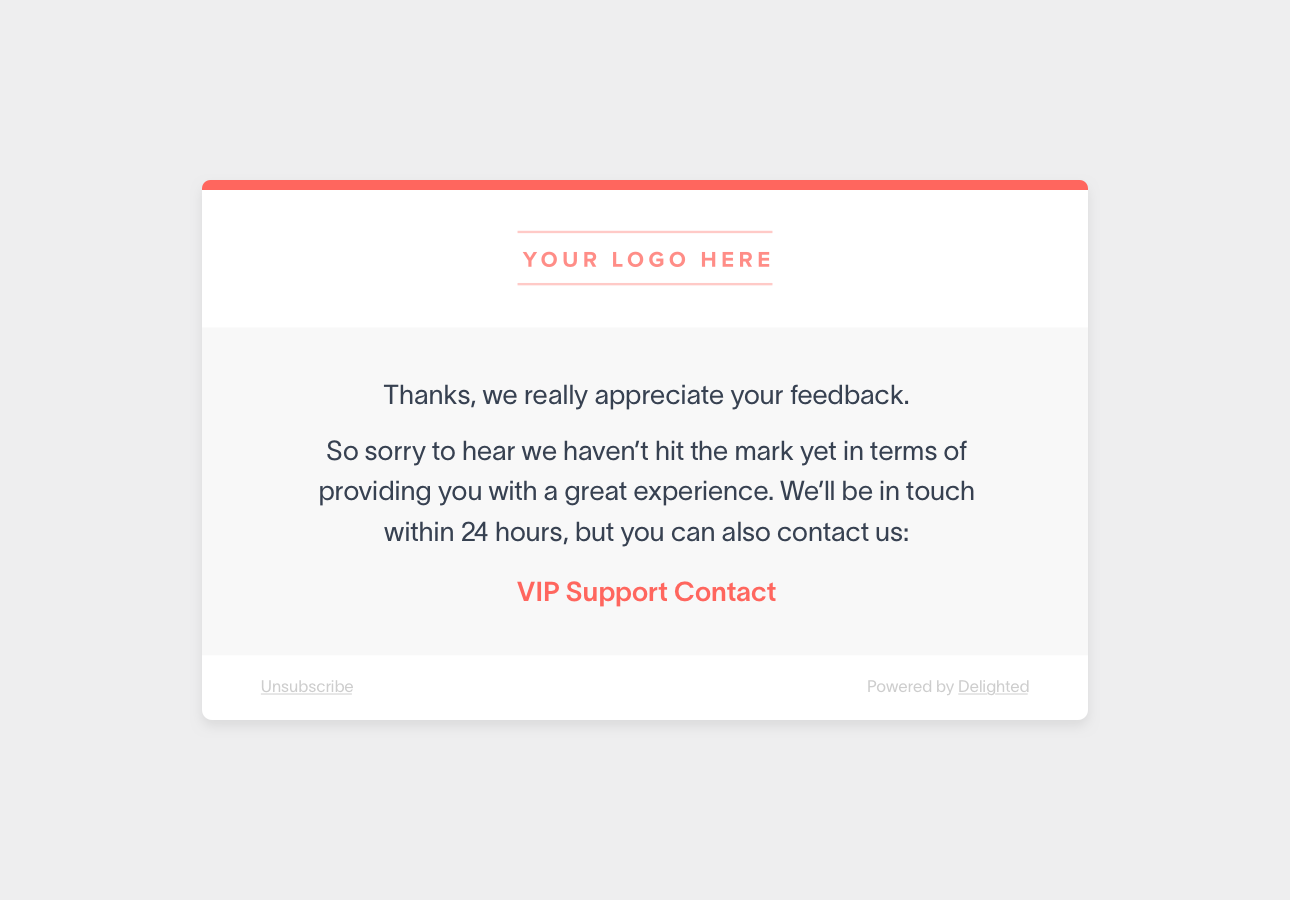
3. Net Promoter Score (NPS)
Net Promoter Score (NPS) is one of the most popular customer satisfaction metrics around. Used globally by companies looking to stay competitive in the world of customer experience, NPS can also be used internally to find out if your customer service matches up.
Surveys sent by NPS tool measure brand loyalty and segment your customers as promoters, passive customers, or detractors.
An NPS survey is a simple two-part questionnaire and asks a single question to start: “How likely are you to recommend [Your Company] to a friend?”
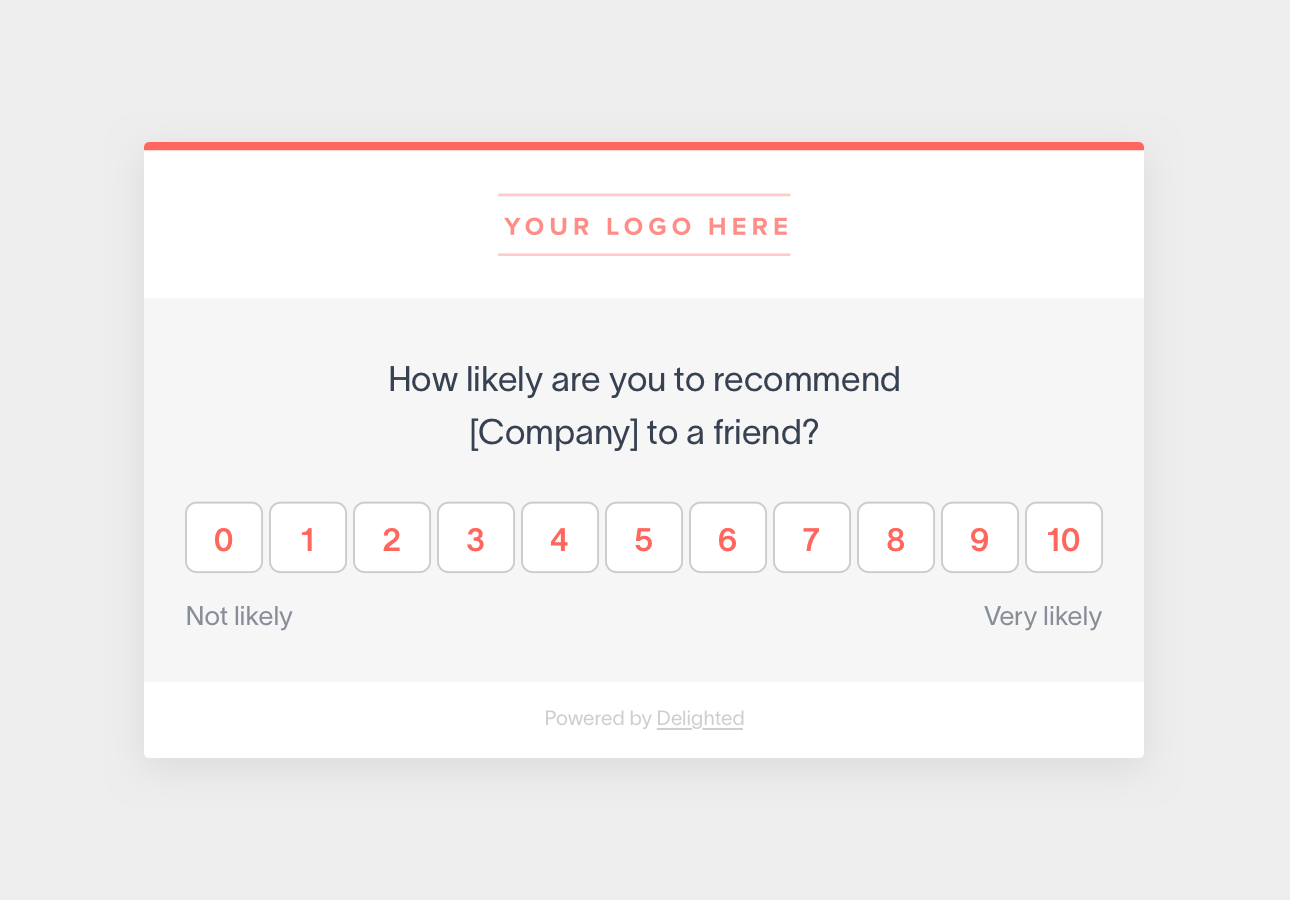
The customer answers the question by selecting a number from 0-10. Then, on the following screen, they can explain their chosen number by answering an open-ended question.
As you accumulate survey responses, your NPS score will be calculated automatically and range from -100 to 100.
By tracking your NPS, you’ll know if your efforts to improve your brand and your customer service are working. And, as you gather survey data and make changes to your business based on the insights, you should see your NPS increase.
Learn more about what is a good NPS score in our latest guide.
TIP: Not sure which metric is best for you? Dive deeper into the differences between CSAT vs NPS vs CES to find out which metric, or combination of metrics, makes the most sense for your customer service needs.
4. First contact resolution rates
Resolving issues to the customer’s satisfaction is just one part of providing an outstanding customer service experience. Your customers want fast resolutions to their problems, whether it’s a tech support issue or a return that needs processing.
In fact, how fast you resolve your customers’ issues is arguably more important than the final resolution. A Zendesk-sponsored survey found that people judge customer service experiences more on the timeliness of the interaction than on the outcome.
Although taking action and coming to a resolution effectively is crucial to customer service success, it may be time for you to consider the amount of time it takes for your support agents to resolve customer issues overall.
TIP: To find out your contact resolution rate, try out this calculation provided by Qualtrics: Take your total number of support tickets and divide it by the total number of tickets solved.
5. Customer churn rate
There’s no easy way to predict when a customer will stop using your service or product, or churn. In fact, customers interact with your brand in various ways across different channels through the customer lifecycle, so how do you know what’s needed to continue to retain your customers?
To calculate customer churn rate, divide the total number of customers lost by the total number of customers in the same time period. Then, multiply that number by 100 and you have your churn rate.

If you’re seeing a reduction in purchases or if you track churn via a CRM, try taking a look at all customer experiences across a customer journey map. Through this exercise, you can revisit when and where your customers interact with your support team and use customer feedback to discover if your support processes (or any aspect of the customer journey) need improving.
TIP: Calculate your customer retention rate, learn retention strategies, and more in our dedicated customer retention guide.
Track important customer service metrics with Delighted
You can turn happy customers into loyal customers with the right customer support metrics – and data you can take action on. Start collecting feedback in minutes with Delighted’s easy and powerful survey templates.
